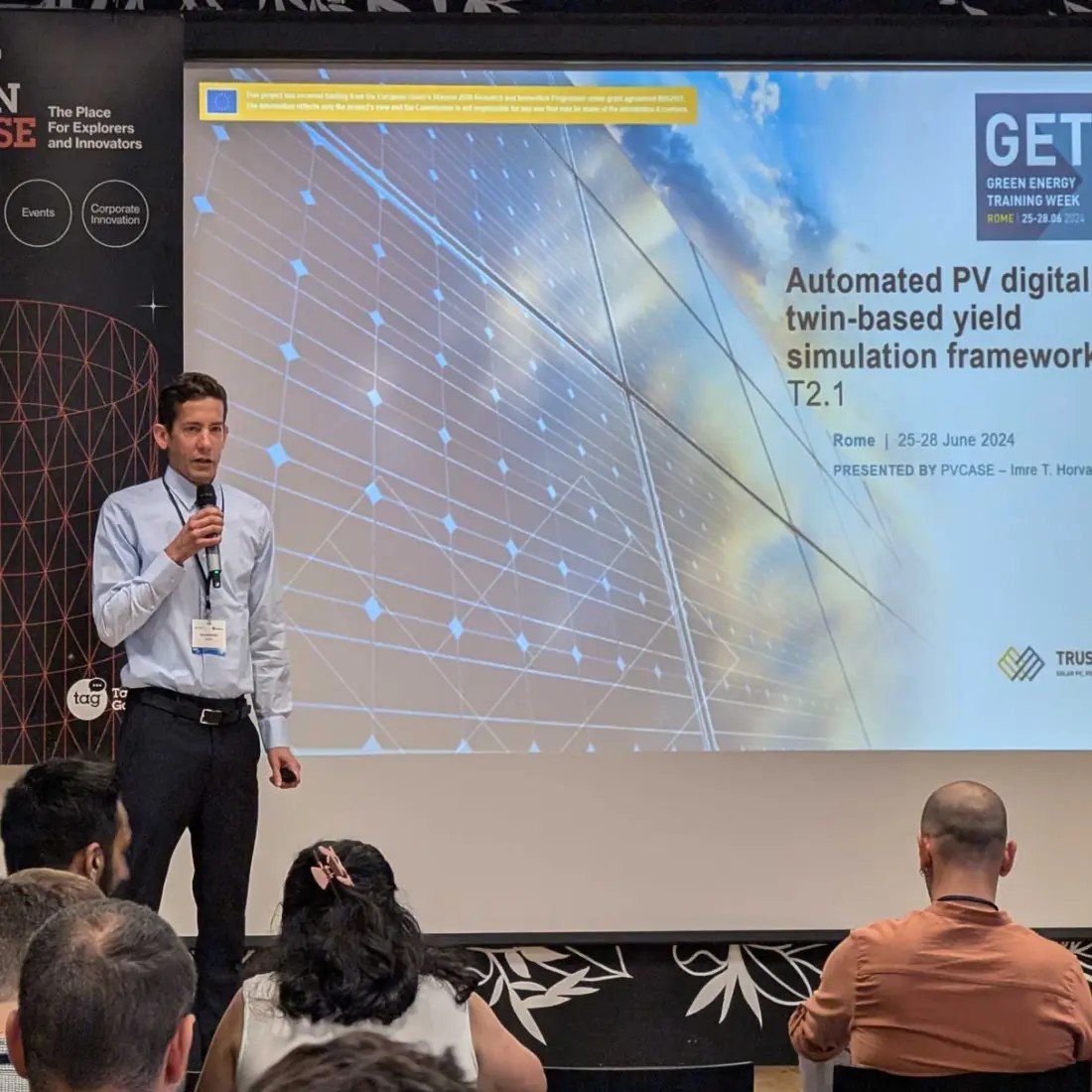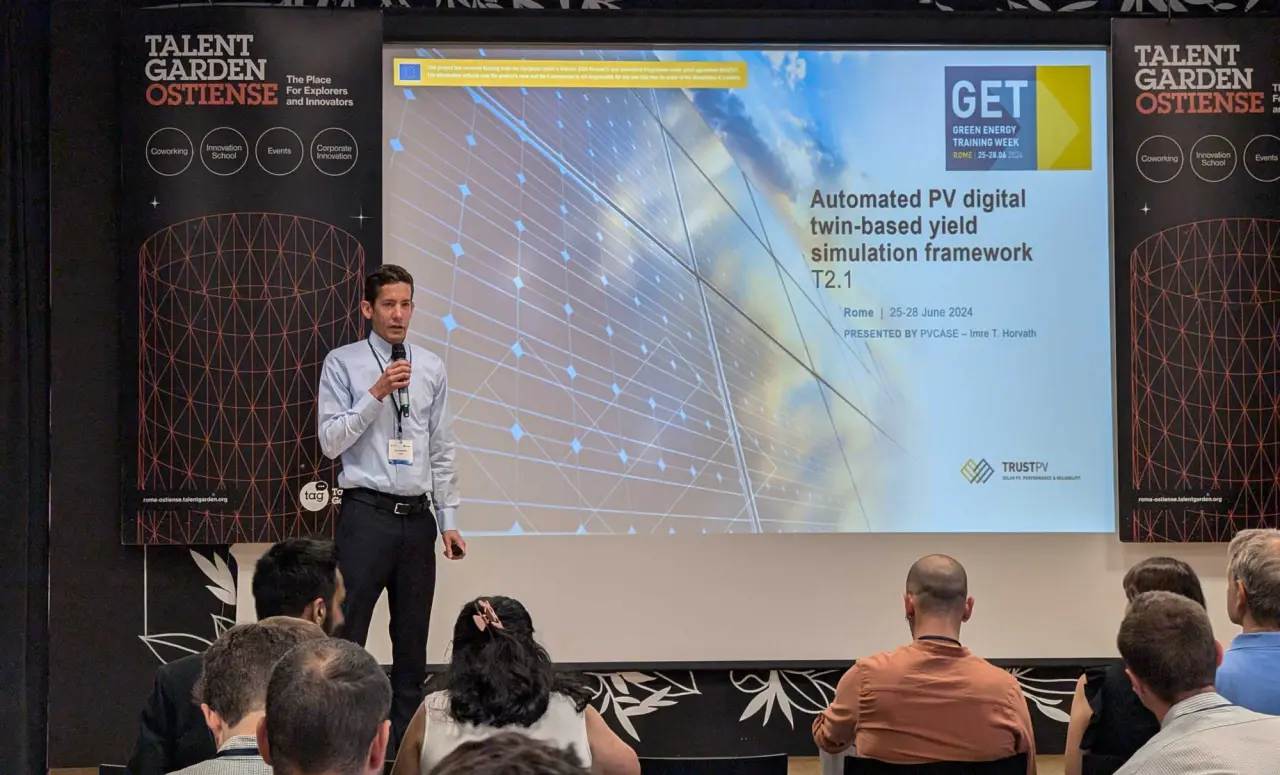PVcase drives green innovation in EU's landmark TRUST-PV project


PVcase, along with 20 partners across Europe, has participated in the TRUST-PV project to make a new push in renewable energy. Funded by the EU's ambitious Horizon Europe research and innovation program, the project aimed to enhance the performance and reliability of solar photovoltaic (PV) components and systems in large portfolios of distributed and utility-scale PV.
During four years of extensive research, organizations from Italy, Belgium, Cyprus, Germany, Greece, Lithuania, France, the Netherlands, and the UK joined their collaborative efforts to develop solutions for seamless integrations, to help expand commercial scale grids and contribute to the growth of the renewable energy industry.
Objectives of the TRUST-PV project
During the four years of research, the TRUST-PV Project has focused on six key objectives aimed at enhancing stability, sustainability, and capacity in residential and utility-scale solar PV systems:
- Increase the reliability and lifetime of systems components.
- Increase the knowledge about performance and establish cost-effective fault diagnostic models.
- Increase the design accuracy, reliability, and performance of utility-scale and large commercial solar PV systems through automation.
- Improve the operational stability at the point of connection and ensure grid friendliness to allow higher solar PV penetration levels.
- Integrate data from various PV value chain stakeholders into a platform that enhances decision-making with AI and human field experience.
- Implement progressive repowering to minimize environmental impact and extend lifetime yield.
TRUST-PV innovations were designed to be tested and demonstrated from fab to field to maximize value. All data gathered along the value chain was planned to be channeled into an AI-based decision-support platform based on Industry 4.0 concepts.

What did TRUST-PV achieve?
The TRUST-PV project has made significant strides in advancing solar PV technology.
"As part of the TRUST-PV project, we found that quantifying quality is key for increasing solar PV performance and reliability. In turn, digitalization is the key driver for quality," said David Moser from Eurac Research and TRUST-PV Project Coordinator.
At the component level, it developed O&M and grid-friendly solar PV components and conducted climate-tailored testing beyond existing standards. Additionally, it benchmarked context-sensitive PV plant components using monitoring data from over 6 GW of operational PV plants, supported by Big Data analytics.
On the system level, the project achieved more accurate energy yield predictions integrating 3D design with Building Information Modeling (BIM). It also introduced progressive repowering, augmented reality for O&M operator training, and disruptive engineering concepts.
Innovations also included wireless sensor networks with IoT and 5G for on-site sensors, automated fault diagnostics, and an extensive database for failure rates and mitigation.
PVcase contribution to clean energy deployment
As an expert in solar design, PVcase helped define the key components in the design planning and engineering stages contributing to the Digital Twin concept.
PVcase specialized in the scalable development of detailed PV plant models, using energy yield modeling tool for utility-scale solar power projects, including evaluation of model performance on 3D terrain and analysis of potential impacts of structural shading on power generation.
The secondary focus was to develop accurate performance simulations, leveraging detailed asset information stored in Digital Twins to supply performance benchmarks to the Decision Support System.
Using software such as PVcase Yield, a plant’s yield can be calculated even at the component level, facilitating optimal decision-making throughout the lifetime of a PV plant.
However, the two primary challenges facing the application of Digital Twins are the complexity of accurately replicating a physical PV asset and the need for more standardization throughout the asset's lifecycle.
BayWa r.e plant
Digitalizing the plant’s electrical design and accurately identifying its component characteristics is particularly challenging. PVcase has tried two approaches to building a Digital Twin of a BayWa r.e plant in South Spain: as-built documentation and drone survey data.
The first approach involved using as-built CAD design files to identify key layers and objects, converting frame polygons into 3D objects with PVcase Ground Mount software, and manually replicating the electrical design from single-line diagrams.
Comparatively, a drone survey provided a CAD file with accurate ground topography and shading objects for precise 3D reconstruction.
Performance simulations from both as-built and drone-survey models showed similar accuracy. This suggests that both methods are suitable for scaling up Digital Twin creation.
However, it was identified that significant time and costs can be saved if a PV asset Digital Twin is created in early project stages using software like PVcase Ground Mount, and continuously maintained throughout later project stages.
TRUST-PV impact on renewable energy industry
In 2023, global solar power capacity surged to record heights, significantly speeding up the clean energy transition. More countries took advantage of low solar costs to provide affordable, renewable power.
While the renewable energy industry is growing exponentially, increasing the efficiency of PV components and systems is crucial to expanding the network. Solar is becoming an intelligent, flexible grid entity providing clean energy and grid support services. While this increases the technology's potential, it also presents significant challenges.
The TRUST-PV project played a crucial part in contributing to the expansion of the renewable industry. It offered participants a blend of expertise and experience to enhance the technology behind building innovative, high-performance, and adaptable commercial-scale PV power plants.
Final thoughts
EU-funded TRUST-PV project has united European solar companies and researchers to develop solutions for the seamless integration of PV plants and support grid scaling.
PVcase, in collaboration with its partners, has developed technical solutions to enhance efficiency and sustainability, paving the way for a bright future in the rapidly expanding renewable energy industry.
Although the TRUST-PV project is about to finish, PVcase continues its innovation journey with the SUPERNOVA project. The project aims to improve grid-friendly solar plant designs using advanced software solutions that revolutionize the design and operation of PV systems. Leveraging expertise and collaborating with industry leaders, the project is driving innovation to establish new standards in the renewable energy sector.
See PVcase in action. Book a demo today. 👇